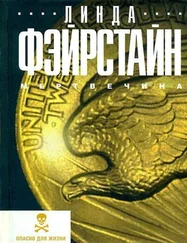“Or some entity emigrating out of the Hallowed Vasties,” Clemantine suggested in a somber voice. “Those who built the Dyson swarms didn’t fear discovery either.”
Frontier civilizations had succumbed to the scourge of Chenzeme warships, but those ships had not caused the collapse of the Hallowed Vasties. The oldest cordons had fallen first, long before the Chenzeme ships could have reached them, most likely brought down by an inherent weakness or an enemy from within.
Again the long tone, bringing an end to what they assumed was a coded message. The original pattern replayed: pulses of sound in sets of one, two, then three, increasing to ten, then declining again. The long tone followed—clearly a separator—and then began a repetition of the complex code.
This time they listened in silence while the Scholar and the Mathematician stood in stillness within their windows—aspects left abandoned as they retreated to a deeper computational layer to decode and interpret the tonal sequence.
When the long tone sounded again, Vytet said, “That’s the full loop. It was exactly the same both times.”
“The patterned portion of the signal peaked at a count of ten,” Clemantine mused, holding up both hands, her fingers spread. “A common base number in human history.” She checked with a DI, confirming what she’d already guessed. “The separator lasts exactly ten seconds. Seconds are a human measure of time.”
Kona: “So it’s human, or it wants to appear as if it’s human, or it’s using these measures because it’s inherited them as artifacts from a human past.”
Clemantine sighed, aware of how much she wanted a connection with this thing, how much she wanted it to be proof that something of humanity remained alive here. But it could be anything.
Grimly: “Maybe it’s just a buoy set in the void, bleating a warning to anyone who will listen. Stay away! I can imagine hundreds of them out there. Thousands.”
Urban cocked an eyebrow as if amused by this show of bitter melodrama. “Let’s say this beacon is human. Then maybe it’s a warning to the Chenzeme… and a welcome to us.”
Clemantine considered this, and had to smile. “A welcome? That would be something new in the history of our species.”
“The beacon does not appear to be a warning,” the Scholar interjected.
Urban turned to him. “You’ve decoded it?”
“Of course,” the Scholar acknowledged in a smug tone that induced an eye-roll in Clemantine. He went on, “Objectively, the signal parses into a map describing a specific point within the Near Vicinity.” He cocked his head. “So perhaps it is an invitation to visit?”
“Let’s see the map,” Urban said.
The Scholar looked across to the window where the Mathematician had been residing—but the Mathematician was gone. The Pilot, dressed in black garb, had taken his place.
The Pilot said, “The coded portion of the signal describes the mass and spectral signatures of four stars. One of them, the single prominent G-type in the Near Vicinity.” He gestured at the map of inverted colors already on display and one of the black stars shifted to glow bright yellow. “Another prominent star farther out.” That star was highlighted next. “And two red dwarfs.” Two dull cherry points winked into existence.
The Pilot crouched within his window, peering at the map. “The unit of measure used in the message is a light year,” he explained. “A different distance, measured in light years, has been assigned to each star. Project a sphere around each star with a radius of the designated distance…” Translucent spheres appeared one by one around each of the highlighted stars, partly overlapping. “And the surfaces of all the spheres intersect at only one point.”
That point blazed bright blue, while the star colors reverted to black and the translucent spheres disappeared.
The bright blue point fell within the range Urban had developed for the source of the beacon, but it was light years away from any visible star.
“Nothing there,” Clemantine said, eyeing the bright point with suspicion. “Or nothing visible—not at standard resolution.”
She looked to Urban, who nodded, anticipating her request. “The Astronomer is working to coordinate telescopes. We’ll get a closer look, but we still might not see anything. There could be a Jovian-scale object there, but if it’s dark and cold we won’t see it.”
“And still, something must be there,” Vytet said. “Something is generating that signal. We need to decide if we’re going to go look.”
<><><>
Subminds migrated between the library and the high bridge, trading memories, allowing Urban to exist simultaneously on both timelines, while Clemantine existed only in the library. He messaged her. She rarely split her existence among multiple ghosts but he invited her to do so now: *Come to the high bridge. There’s an experiment I want to run. You’ll want to see it .
Within the library, she looked at him curiously. On the high bridge, he felt the sudden, sharp presence of her mind, her will, overlaid in intimate proximity against his own. A moment for her to take in the mood of the cells, and then she let slip a sense of surprise, before quickly suppressing it.
*Ah, I see , she said. *The cells are quiet because they haven’t heard the signal yet. Dragon is too distant, the signal too attenuated to directly detect.
*Yes, but I’m going to let them hear it now.
*You want to interrogate them , she guessed. *See if they recognize it. Learn if this is a Chenzeme signal.
*Be ready , he warned. *I don’t know how they’ll react.
He uploaded a memory of the signal, pushing it across several links. It entered the field as unsourced data. He worried that without provenance it would be rejected, but the philosopher cells took it up, treating it with a mix of hostile curiosity and skepticism.
*They see it as a thought experiment , Clemantine said. *A puzzle to be solved.
She was right. Groups of allied cells worked to unravel the code and they proved faster than the Scholar and the Mathematician. With staggering speed, the cells recognized that the signal coded for a location within the Near Vicinity—dangerously close, from their perspective. Their inherent aggression escalated as they prepared to meet a threat. Action was proposed: Divert course. Close with the target. Attack.
At the same time, select lines of cells began to scan deep memory, seeking to match the signal to past experience. Urban followed this with anxious interest, but no similar memory surfaced. *The signal is not Chenzeme , he concluded. *And not a trick of the Chenzeme.
*A human signal, then , Clemantine said.
Or a machine that originated with humanity, or a lifeform diverged or descended from the ancestral human type, or a lifeform brought into being by human ingenuity. Many possibilities still existed, and only one certainty: Whatever it was that had set that simple rhythm pulsing into the void, it wanted to be found.
As Urban’s subminds migrated between the high bridge and the library, he settled on an opposite strategy. He would do what he could to disappear, to not be found, to remain hidden until he had a better idea of what was out there.
For nearly a millennium he’d traversed the void with Dragon ’s hull cells gleaming because they marked him as Chenzeme—a bio-mechanical entity so arrogant in its power it had no need to hide. Urban had used that camouflage to successfully hunt other Chenzeme ships but now his perspective shifted. He was no longer sure he sat behind the biggest gun in the Near Vicinity—and that meant his luminous hull had become a liability.
Читать дальше












